What Does a Career in Product Look Like?

After interviewing PMs at several different companies, Jackie Bavaro, co-author of Cracking the PM Career, has uncovered the foundational skills that are expected from Product Managers across the industry, as well as how they change as you advance along the PM career trajectory. Learn what happens after you ace the PM interview: from shipping products, to developing product strategy, to coordinating organizational excellence.

This is not your first book. Why don’t you tell us more about your thought process from the original book Cracking the PM Interview to now, Cracking the PM Career?
Both this book and my original book have a lot in common. Cracking the PM Interview was really inspired by my experience. When I applied to be a PM, I got rejected my first time applying to Google. I made it in a year later, and then I interviewed hundreds of people. And while I interviewed them, I realized that some of the reasons people passed or failed the interview weren’t directly related to their skills and how good of a PM they really could be, but were more related to how well they prepared for the interview and how much structure they added to their answers.
And I thought: if we wanna have more great PMs in the world, we should really level the playing field. Any advice I’d be willing to tell a friend of a friend, I should be willing to tell anybody on the internet or anybody in the world who wanted to buy the book, to make it possible for everybody to have a good chance to become a PM.
I really see the new book as the sequel. It’s saying, you got the job. Now how do you succeed as a PM? And how do you advance in your career? And just like I saw there were some hidden secrets to the PM interviews, I found that there are also some hidden secrets to succeeding as a PM.
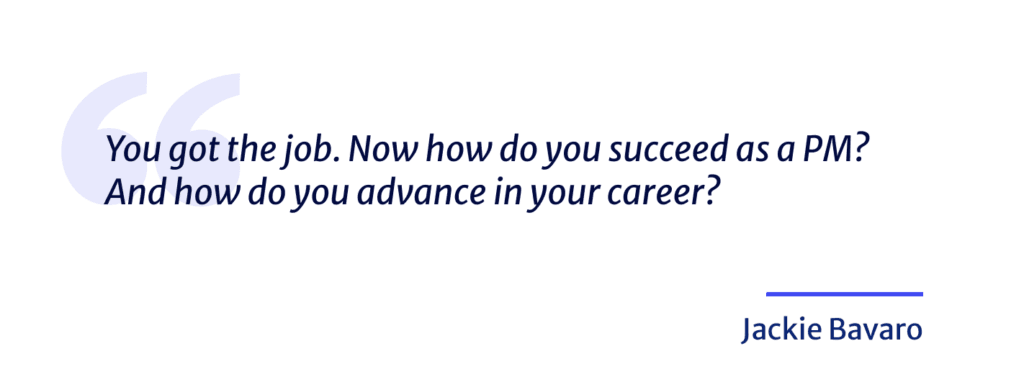
There are some tips and tricks that if you just understood a little bit better, you could get on the right path. You could build products that that did better in the marketplace. And you would able be able to work better with your manager and with your cross-functional partners in advance so that you can actually get all the recognition that you deserve.
You’re one of the most influential Product Leaders out there. But what were you doing before being a PM?
I studied Computer Science and Econ in undergrad, and I’m one of those lucky people who got to go straight into Product Management. I became an intern at Microsoft after my sophomore year of college and loved Microsoft. I decided to go to work there full-time, and I worked there full-time for about three years.
When I was moving to New York, Microsoft didn’t have any PM jobs there. I loved products so much and wanted to stay in the field. So I applied to Google. That’s when I got rejected the first time. I decided to stay with Microsoft as a consultant for a little while, and then switched over a year later to become a PM at Google. Loved Google, stayed there for three years.
And I one day get a message from a friend I knew from Microsoft saying, “Hey, I’m at this new company. Do you wanna have a coffee and learn about it?” And I was like, “Well, what harm would a coffee do?” That’s how I ended up as the first PM at Asana. And Asana was an amazing experience. I started as the first PM and became Head of Product Management and grew the team to be over 20 people.
During that time I got to become a manager. I got to become a manager of managers, have all these experiences. I wrote my own career ladders to try to help coach people on my own team to grow, absolutely loved it.
Then a little over a year ago, I decided it was time for something new. That’s when I left, and I’ve been working on the book and handling the pandemic and a preschooler.
For those who don’t know, Asana went public in late 2020. It’s one of the most popular tools for Product Managers. So you also got to build something for people like ourselves.
Yeah. It’s a great tool. I like to think of it as project management for people who don’t like to do project management.
Love that. So you have experience writing books, and you have experience building digital products. What are some parallels between building something physical and building something digital?
The thing that they have most in common is that in both cases you should really have a goal. And you have to understand, why are you building this product? What problem is it solving? Why? What will success look like?
And exact same thing for a book. Why do you wanna write this book? What problem is it solving? And what will success look like? The biggest difference though for me is that as a Product Manager, everything you do, you get done through other people. You work to influence the people around you…influence the designers, influence the engineers. And at the end of the day, you’re not the person who’s sitting there typing the code.
With a book, you get this difference, which is that you actually have created something tangible with your own hands at the end of the day, which can be a nice break from the sometimes thankless job of Product Management.
Totally. So you notice that there is a need for people to continue growing in their Product Career after they get that first job. And then how do you structure the book? Because there are so many different ways you can grow your PM career.
Yeah, great question. The way that we’ve structured the book is that the first chapters are on Product Skills. And so what I did is I talked to lots of Product Leaders, lots of different companies, looked at the job ladders. And what I found is that the job ladders look very different from company to company. Every company groups the skills together differently. But if you pull apart those groupings and look at what skills are underneath the groups, they’re very consistent from company to company.
I group them as product, execution, strategic, and leadership. But there’s no one right way to group them. So for example, is communication a leadership skill or a strategic skill? You can move them around. We went over those and broke them down into probably more than 30 sub-skills here. And that’s the first chapters of the book.
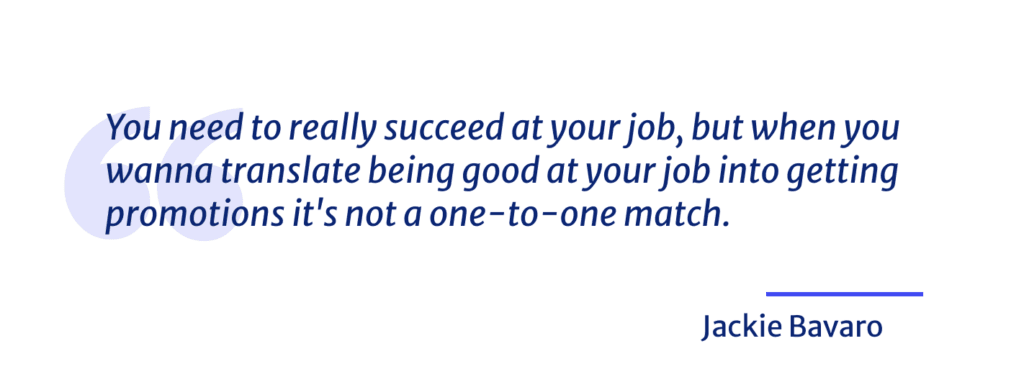
We have a whole section on people management and what it takes to move into people management and the new skills you need when you’re there. And then at the end of the book, we talk about career paths and career ladders. The skills are the individual practices and frameworks and responsibilities. You need to really succeed at your job, but when you wanna translate being good at your job into getting promotions it’s not a one-to-one match. And it’s not a one-to-one match between skills and being good at your job.
What I mean by that is you might have the best possible user insight and data insight, but if you can’t use those insights to ship great products that help people and solve problems, then you’re not really having the impact that you want to have. And then you won’t be getting those promotions and you won’t be advancing.
So at the end of the book we really talk about, What does the career ladder look like? What differentiates an APM from a PM 1, from a Senior PM, from a PM Lead and a Director, all the way up to Head of Product. And we’ve done interviews with a lot of successful PMs and talked about their paths and what they’ve learned along the way.
Let’s dive deeper into that. Some companies like Google would call almost everyone a Product Manager, even if someone has a lot of experience. While Microsoft calls some people Program Managers, instead of Product Managers. How do you decode those titles to describe the PM career ladder?
What I’ve learned through this research is there are three phases to a PM’s career. The first phase is the PM phase, and that’s when you’re focused on shipping products. When you think about your PM interviews, and what you might be doing for your first five years as being a Product Manager, it’s really all about shipping great products. It’s all about, researching customers, validating your designs, maybe running AB tests, analyzing them, iterating, improving, and shipping things that are successful.
You get better and better and better at that. But to get to Senior PM, the role changes. And you don’t get to Senior PM by just becoming better at shipping product. You get to Senior PM by getting better at product strategy.
So that means not just, How do we take this product and ship it really well, but what products should we be building? What goals should we be going after? What should we set our roadmap? What’s our long-term vision. How do you set a long-term plan that will help your company win in the marketplace?
That’s a new set of skills and a new set of work that you do as a Senior PM that as an APM you might not have even realized existed. It’s sort of interesting as a new PM, when you look at the Senior PMs on your team, you might wonder, what makes them a Senior PM? I don’t see what they’re doing that’s so great.
And that’s because a lot of it is behind the scenes. A lot of that is going to be the strategic work they’re doing. The times that they go to an executive and they convince them that we need to hire people who know AI so that it can be ready for the moves we’re gonna need to make two years from now.
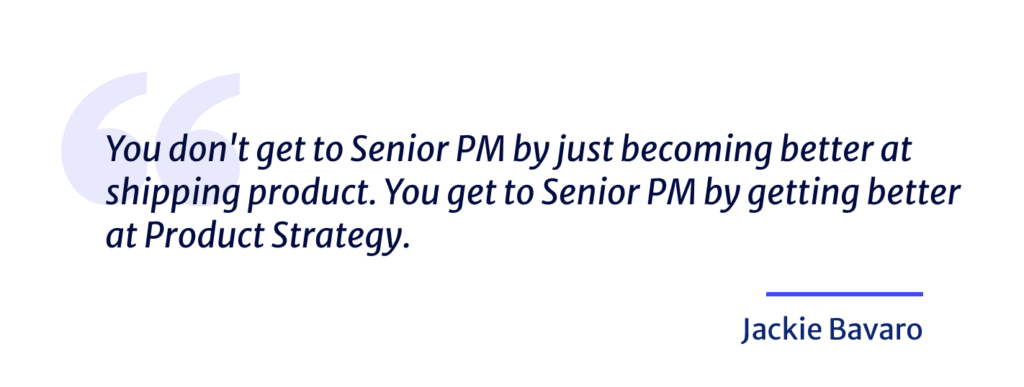
You get better and better at product strategy—deciding what your company needs to do to win in the marketplace. And they say, great, I’ve reached the top. There’s nothing else to learn. But it shifts again.
And there’s the third phase of product careers, which is organizational excellence. So once you move into people management, the focus is no longer on shipping great products or creating product strategy, but instead on building a high performing team that can create good strategies and ship good products.
So now the role really becomes about hiring people, and coaching and developing people. Setting up processes, helping different departments at the company work well together, removing obstacles. Finding these huge multipliers on your team’s success that will help the whole company succeed, without your having your fingers in every little product decision.
What’s interesting is some Heads of Product will still be very involved in product review and making those small tweaks. As an APM, let’s say, when you think of what your Head of Product does, you might think that most of their job is this feedback you’re getting in product review. That most of the job is the is the way that they knew exactly how the design should work, or that kind of thing.
But that’s really a small part of their job. The larger part of their job is building the team and coaching the rest of the company on company strategy.
But what about people that enjoy being the front line with engineers and designers? They might not want to become a Head of Product and build teams, but they still want to grow in their career.
Yeah. So what I found is that a lot of job ladders have some level at which it’s okay to not continue advancing. So the two things, one is that there’s some level, which is okay to not continue advancing. For example, most companies will not let you just hang out at APM for 10 years. If you’re on your eighth year as APM and you haven’t graduated to be a PM I, they’re gonna say: Hey, great work, but I’d rather have that headcount spot for someone who’s gonna be growing faster. It’s really meant to be a training job that you hire people in and grow them.
But for most companies, Senior PM is around the level where you’re a high-performing member of the team. You’re independent. You create a lot of value on your own. And for example, if work-life balance is more important to you at this point in your career, or if you have a side project that you’re really passionate about, you could spend your entire career as a Senior PM and the company would be really happy to have you. You don’t need to continue to get promoted to stay at a company.
And really career success can mean so many different things to different people. That’s an entirely valid approach to your career. If you make it that far, you should be very proud of what you’ve done and you shouldn’t feel extra pressure to just take on new responsibilities. There is the Principal PM role. The title between Senior PM and Principal PM can vary from company to company.
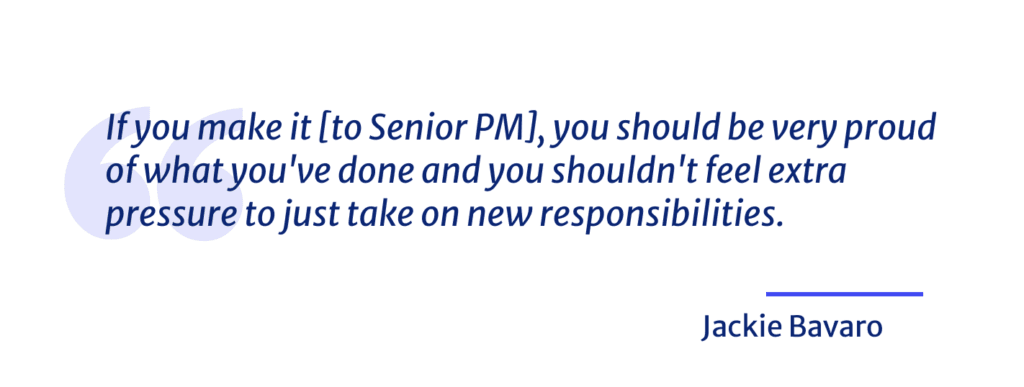
But generally what distinguishes a Principal PM is that they are an expert in their industry. They’re not just the best in their company at something, but actually they’re well respected in the industry at being the go-to person in the industry to understand a concept.
Another thing is that to become a Principal PM, you need to join a company that has a business need for a Principal PM. So that means they have a business need for somebody who is so advanced, so strategic, so excellent at product skills, execution skills, and product strategy. And that the size of the work that they need to be responsible for—to create a large impact that justifies their high salary—that that can be done with a small enough number of engineers that you don’t need to be a people manager.
In the product careers, a lot of times people become people managers because it’s gonna take 50 engineers to build your product. And one PM can’t lead that many engineers. But some places where Principal PMs are very valued are for example, in high-stakes partnerships. So if Yahoo and Microsoft are partnering on something, that’s the kind of place where you really want a Principal PM because the actual amount of product work is small enough for a few engineers to handle, but you really can’t afford anything going wrong.
It used to be like, okay, you want to work in product. Great. You are a Product Manager. And the product team is the Product Manager. And now we’re seeing this entire ecosystem of careers for Product People, and also different, hybrid roles.
Yeah. I think that the future of product is that there’s going to be a lot more Product Managers. Not every company, especially small ones, can afford to have an extra person who only does Product Management. So I really think that people from many different roles are going to start learning and picking up PM best practices. Product best practices like, think about your goals before you start the work. It’s kind of obvious, but that’s the sort of thing that Product Managers are really trained in. And I think we’ll start seeing lots and lots of roles can benefit from that mindset.
I agree, it’s a good mindset regardless of your title. But what is the “ultimate step” in the PM career ladder?
There are lots of different directions. If you were gonna go with a normal straight career ladder, I would say probably Head of Product, which becomes not just being responsible for Product Managers, but also designers and researchers. Depending on the company, engineers. But they could be separate.
That’s the traditional path. But I see a lot of people choose other careers after Product Management. So for example one really interesting role is general manager. I mentioned Head of Product might be responsible for the PMs, the designers, and maybe the engineers. A general manager of the business unit is responsible for those people within a department, but also the sales and the marketing people. All of the different departments together. They’re really considering both the profits and the losses and everything it takes to bring a product to market successfully.
People also tend to go into various roles in venture consulting. I see people move into product coaching. Some people move into Chief of Staff roles, although that’s a title that’s even more ambiguous than Product Manager. So there’s both very junior and very senior chief of staff roles. There’s a lot of different things that you can be set up for. And then of course CEO roles and founder roles.
Maybe that’s an idea for your future book. The life after the PM career. I’m also very interested in learning how people learn. You kind of fell into product, but how did you learn the skills to truly become a Product Leader?
There there’s one framework I put together that I like a lot. I call it Notice, Assess and Improve. And what I found is that the best way to improve as a PM is to get feedback. Especially feedback from your peers, your managers, and also feedback from your managers’ peers. So if you’re at a larger company, for example, the other PM managers are a great source of feedback.
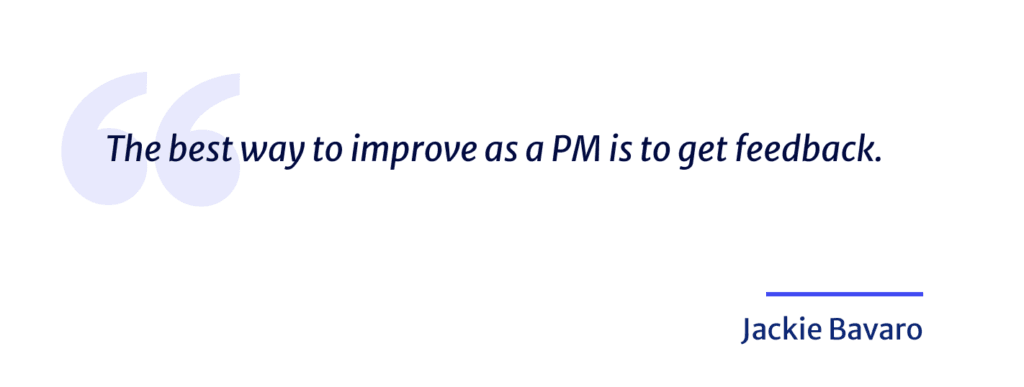
But a lot of the time of feedback that you’ll hear as a PM isn’t very actionable—or it doesn’t seem actionable at first. So you might hear: you need to be more strategic. Or, you need to be more on top of problems on your team. You need to not let the date slip, etc.
When you first hear it, maybe it doesn’t resonate with you. And sometimes you’re like, you’re wrong. You misunderstood the situation entirely, and that feedback is unfair and invalid. But try splitting it up into Notice, Assess and Improve.
Notice means: find the situations where this feedback might be applicable. What are the cases where the person giving you feedback thinks that you had a problem, what’s the pattern? And on that very first step, when you start to look at the pattern, you might see a bunch of different things. One of these might be that you didn’t even notice these situations. So maybe somebody says you have a lot of miscommunication. And you’re like, “When?” And they’re like, “Well, in that last meeting.” And you’re like, “What?”
So the first step there might just be learning when you’re unclear. Be like, “Okay, can you please give me a signal, you know, touch your ear every time I have a miscommunication, or touch your ear every time I interrupt someone.” Or whatever the skill is that you’re trying to notice. First just gather this large bank of examples and train yourself to notice these situations.
And then the second step is to Assess. So one thing that might happen is maybe you were noticing all the time that, for example, your a project was late, or that your dates kept slipping. Maybe you’re very aware of that. But they thought that they just slipped because you made a mistake, but actually you had made a really intentional decision to move the date in each of these cases.
Something went wrong because they weren’t happy with how it went. But the problem that they named might be a little bit different than the way that you frame the problem to work on it. Maybe from your point of view, the problem isn’t that the date slipped. The problem is that you didn’t loop in the stakeholders when you were moving the date, and you didn’t get enough buy-in, and you didn’t persuade people about the date.
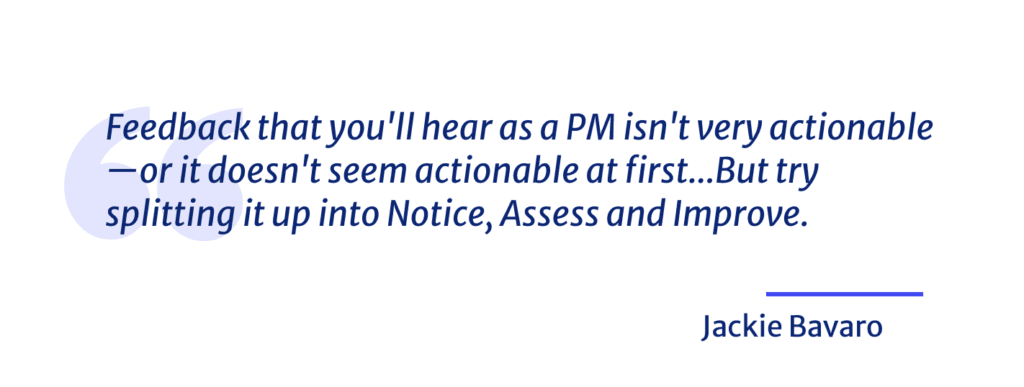
There, you might say that the problem wasn’t your judgment or your execution skills on getting your team to ship as fast as possible. The problem was really the communication skills. When you’re able to reframe, go back to the person who gave you the feedback, double-check if that could be true, and then you can work on that final step of How do I Improve?
How do I set up what I want to do, set a goal, practice it, and then go back and check with someone if it improved? That’s how you can make the most out of the feedback you’re getting so you can advance as fast as possible and improve your skills as fast as possible.
You’ve achieved the ultimate step in the product career, where you had to coach other people. How about mentorship and help outside an organization? Is that valuable? Is it something that you personally do?
Yes. Mentoring is very important for two reasons. One is that if you do have aspirations to be a people manager, then mentoring is a prerequisite. Being a mentor is how you demonstrate those skills and build that trust that you’d be a good product leader. But even if you have no interest in people management, mentoring is how you can give back to the community. And especially because we’re still in the very early days of Product Management as a career, you’re able to have a very, very large impact on the world and across companies if you are able to help mentor other people.
One thing I’ve learned is that people are interested in different types of mentorship. So some people really like one-on-one mentoring with someone, some people like to get groups together. Some people like to put together a big presentation of what they’ve learned and take it on the conference circuit. Some people like to tweet, some people write thought articles.

And so if you’re looking for a way to give back to the community and to mentor people, what I would say is that you don’t need to fight your personality. It’s okay to pick the approach that really calls to you. The one that feels like less work to you, the one that you enjoy doing the most. And use that to go forward.
If you are doing writing the thing that I think that the community needs a lot more is stories about real Product Management. So if anybody out there is listening and wants to contribute, there is so much value that even a fairly new PM can have. Just tell the story about a product decision you made: how you thought about the choices, the interesting things you learned, how it turned out, what you learned after that and how you would have done it differently.
Each of those stories is valuable. And there’s no chance of the world being too filled with those stories. Everybody will love to learn about those specific ones. You really are the expert on your story. And you can kind of work with your company to make sure that you’re not giving away any secrets that they don’t want you to.
You’ve been giving back to the community since the very beginning. What is your goal with this book?
There are a few different goals we have. High level, my goal for the book is to create more great Product Managers in the world, because I want there to be more good products in the world. And every time I see a product that has a terrible UI, I’m like, oh, I wish they had a better Product Manager there. But also there are these products where the entire product and the thousands of hours people put into it fails.
I was thinking about Quibi recently, how so many people put so much effort and so much energy and so much love into that product. But some of the premise was flawed from the start, and better Product Management could have prevented that waste of energy.
So I’m really hoping that through the book that more people improve their PM skills, that we create better products. I’m really hoping to level the playing field so that the people who are really skilled the best at their careers are able to get a fair shot at expanding their scope and their impact and getting the promotions they want so that they’re able to have as much influence as they deserve.
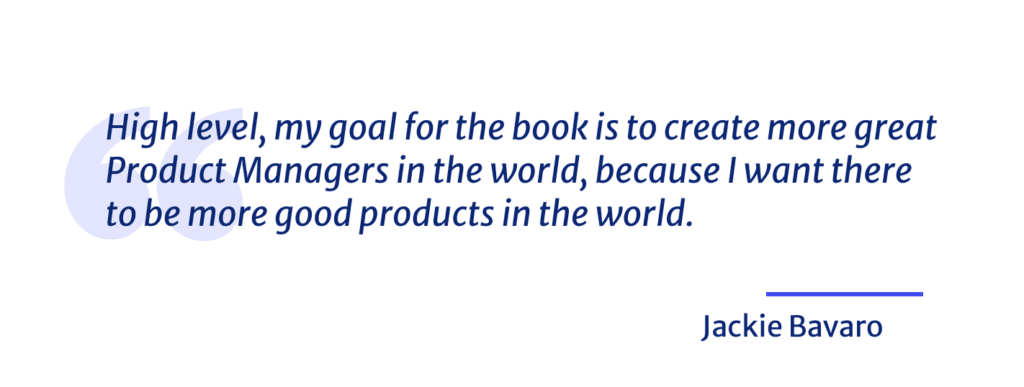
I agree. And I think one of the beautiful things about this content is that it’s not a secret in Silicon Valley anymore. Before, you had to meet someone from Google in order to learn, and now you can learn from your house. All that democratization of education automatically benefits the work to make better products. We have a big responsibility to continue updating some of those mental models that were useful at some point, and now are changing. For me personally, I don’t understand why we keep talking about Agile so much when this is something that was invented 20 years ago.
You and I had talked about this a little bit before. The concept of, What role does project management have in Product Management? And I think what I found is that Product Managers spend so long being like I’m a Product Manager, not a project manager that then when it comes time to do some project management in your team, you’re like, no, I can’t do it. It’s not my job. But to have your team be successful in dealership products, you do need to do some project management.
And, what I learned is that almost every current software team is agile-ish. The agile frameworks have a lot of good stuff in there.
The idea of doing daily stand-ups, the idea of doing sprint kickoffs, and sprint retrospectives. But you don’t need it all. You don’t need to do it in a very formal way. A lot of times, if you are having trouble with project management, taking a look back at the agile concept, sometimes there’s just one that will help. A lot of it lets a team be self-led and prevents a PM from having to be the one pushing everyone and putting the pressure on. Instead, the team can put pressure on themselves, which ends up leading to better functioning.
How do you see the Product Management discipline evolving in the future?
First of all, I think there’ll be a lot more Product Managers. I think a lot of people in jobs that aren’t official Product Managers will be using PM best practices.
The biggest change I think I’ve seen from 10 years ago is how easy it is to do A/B testing now. 10 years ago, software shipped in a box and you didn’t get very much feedback and iteration on how what you built did. So if I’m going to carry that forward, I’m hoping for that in the next 10 years there will be improvements in rapid prototyping and especially, today, it’s now becoming really fast to create a quick click-through demo or click-through mocks.
One thing I think we’re going to see soon is we’ll be connecting really cheap, no-code front ends to the real customer data backends. Because that will let you do much more advanced types of AB testing before you’ve built out the full, scalable productionized version of your code. That lets you validate your ideas sooner and that will let you get past the bad ideas so you can find a good idea faster.
I’ve always been a proponent that I don’t think you need a computer science background to be a good PM. And I think that we will see more and more of that as you need less coding skill to be able to self-serve. That as a PM, you’ll be able to get your own data, you’ll be able to run your own A/B tests without having that computer science background.
